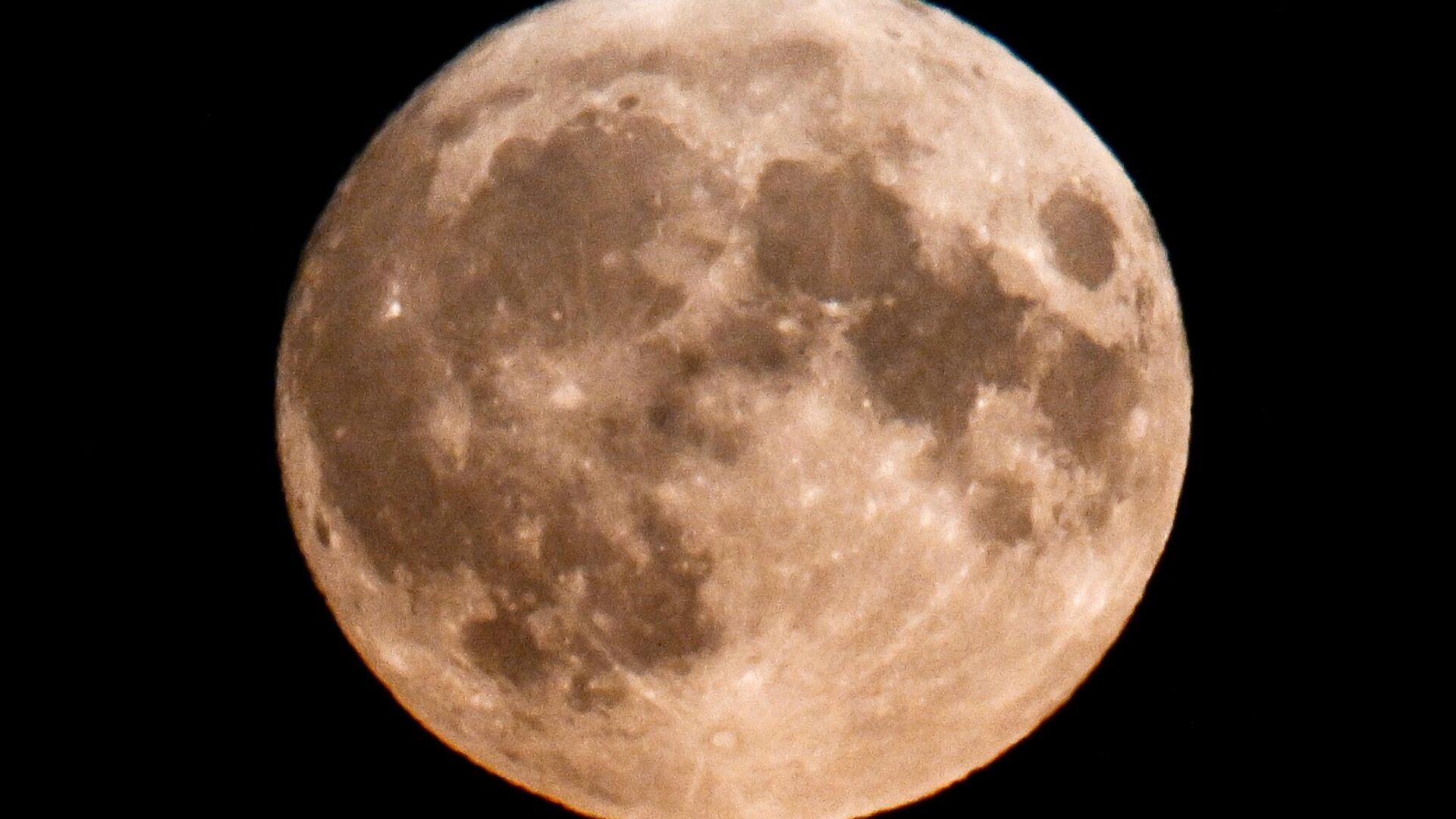https://sputnikglobe.com/20231023/new-study-finds-moon-40-million-years-older-than-previously-thought-1114437356.html
New Study Finds Moon 40 Million Years Older Than Previously Thought
New Study Finds Moon 40 Million Years Older Than Previously Thought
Sputnik International
While it was initially assumed the protoplanet Theia had struck proto-Earth with a glancing blow in the event that formed the moon, recent studies have found that a direct impact would not have necessarily destroyed both planets.
2023-10-23T21:16+0000
2023-10-23T21:16+0000
2023-10-23T21:16+0000
beyond politics
moon
zircon crystals
lunar mission
samples
astronomy
science & tech
https://cdn1.img.sputnikglobe.com/img/07e7/08/1f/1113008688_0:109:2096:1288_1920x0_80_0_0_6e917915256ecacc04009f5969e33f5e.jpg
She doesn’t look a day over 4.51 billion years old!A new study of how Earth’s moon formed has found that the natural satellite is actually 40 million years older than previously believed, putting its formation at 4.52 billion years ago.Zircon is a useful crystal for dating rock samples because it contains a certain amount of the radioactive elements uranium and thorium, which can be used to tell when the crystal first formed based on how much of them has undergone radioactive decay into smaller elements. The scientists used this method to find out when the zircon crystals formed and got a shocking number: 4.52 billion years ago, about 40 million years earlier than the previous estimated age of 4.46 billion years old.According to the prevailing theory about the moon’s formation, early in the solar system’s formation, Earth was struck by a smaller planet about the size of Mars, which turned both planets molten and blew out a huge amount of rock, some of which fell back on Earth but some of which remained in orbit around the Earth, coalescing into the moon. This explains why unlike almost any other moon in the solar system, ours looks like a planet on the inside, bearing almost the same composition and structure as the Earth.Their study was published on Monday in Geochemical Perspectives Letters.
https://sputnikglobe.com/20231023/deep-earth-leaks-ultra-rare-helium-isotope-study-suggests-1114429986.html
Sputnik International
feedback@sputniknews.com
+74956456601
MIA „Rossiya Segodnya“
2023
News
en_EN
Sputnik International
feedback@sputniknews.com
+74956456601
MIA „Rossiya Segodnya“
Sputnik International
feedback@sputniknews.com
+74956456601
MIA „Rossiya Segodnya“
lunar formation; zircon crystal; moon's formation; theia
lunar formation; zircon crystal; moon's formation; theia
New Study Finds Moon 40 Million Years Older Than Previously Thought
While it was initially assumed that the protoplanet Theia had struck the proto-Earth with a glancing blow in the event that formed the moon, recent studies have found that a direct impact would not have necessarily destroyed both planets.
She doesn’t look a day over 4.51 billion years old!
A new study of how Earth’s moon formed has found that the natural satellite is actually 40 million years older than previously believed, putting its formation at 4.52 billion years ago.
The new age was determined by studying ancient crystals found in the rocks retrieved from the lunar surface by the Apollo 17 mission, the last time humans walked on the moon, in 1973. Called zircon, the gemstone is formed when the elements zirconium, silicon, and oxygen crystallize in magma, or liquefied rock.
Zircon is
a useful crystal for dating rock samples because it contains a certain amount of the radioactive elements uranium and thorium, which can be used to tell when the crystal first formed based on how much of them has undergone radioactive decay into smaller elements. The scientists used this method to find out when the zircon crystals formed and got a shocking number: 4.52 billion years ago, about 40 million years earlier than the previous estimated age of 4.46 billion years old.
"It's amazing being able to have proof that the rock you're holding is the oldest bit of the moon we've found so far," study lead author Jennika Greer, a research associate at the University of Glasgow, told US media. "It's an anchor point for so many questions about the Earth. When you know how old something is, you can better understand what has happened to it in its history."

23 October 2023, 19:04 GMT
According to the
prevailing theory about the moon’s formation, early in the solar system’s formation, Earth was struck by a smaller planet about the size of Mars, which turned both planets molten and blew out a huge amount of rock, some of which fell back on Earth but some of which remained in orbit around the Earth, coalescing into the moon. This explains why unlike almost
any other moon in the solar system, ours looks like a planet on the inside, bearing almost the same composition and structure as the Earth.
“It moves the goal post. It pushes back the minimum age of the moon formation,” Greer added. “It’s important to point out, this is the oldest age to date. It doesn’t mean we now know the age of the moon and we should stop looking.”
Their study was
published on Monday in Geochemical Perspectives Letters.



